Out of all the components of a rainwater harvesting system, the catchment area is one of the most significant. Rooftops are excellent catchment areas, serving as the initial point of contact for collecting rainwater. Your rooftop's surface plays a pivotal role in the efficiency and effectiveness of rainwater harvesting, influencing the quantity of water collected and its quality.
Rooftop catchment areas can vary widely, encompassing a range of materials and designs. From the flat, expansive roofs of commercial buildings to the sloped and tiled roofs of residential homes, each offers unique advantages and challenges for rainwater collection. The roof material — be it metal, tile, asphalt shingles, or green roofing — significantly impacts the quality of water collected. For instance, roofs made of metal or clay tiles are preferred for their ability to provide cleaner water, as they are less likely to leach chemicals or harbor contaminants than asphalt shingles.
When considering a rooftop as a catchment area for rainwater harvesting, several key factors come into play:
The next thing to consider when looking at rainwater harvesting system components is how the water is conveyed from the rooftop. This is where the conveyance system, comprising gutters and downspouts, plays an indispensable role. The design and material of these components are pivotal in ensuring that the harvested rainwater is directed swiftly and cleanly from the catchment area to the storage tanks, minimizing losses and contamination.
Gutters are the horizontal components attached to the roof's edges, designed to collect and channel rainwater to the downspouts. The effectiveness of a gutter system lies in its capacity to handle the volume of water collected from the roof during heavy rains while preventing overflow. The choice of material for gutters is crucial, with options ranging from aluminum and vinyl to stainless steel and copper. Each material has benefits and considerations, including durability, cost, and maintenance requirements. For instance, aluminum gutters are lightweight and resist corrosion, making them a popular choice for their balance of performance and affordability.
Downspouts carry water from the gutters directly into the storage system. They are the critical link that ensures the efficient and controlled flow of harvested rainwater, preventing it from simply spilling over the sides of the building. Like gutters, the material selection for downspouts affects their longevity and functionality. Additionally, the positioning and number of downspouts are determined by the roof's size and design, ensuring that water is evenly distributed and efficiently directed to the storage tanks.
The choice of materials for gutters and downspouts is influenced by factors such as the local climate, the amount of rainfall, and the quality of the harvested water required. Materials that resist corrosion and wear and do not leach harmful substances into the water are preferable. Furthermore, the design of the conveyance system, including the slope of the gutters, the size of the downspouts, and the integration of leaf screens or guards, plays a significant role in maintaining water quality and flow. These design considerations help to minimize blockages and maintenance, ensuring the system remains efficient and effective over time.
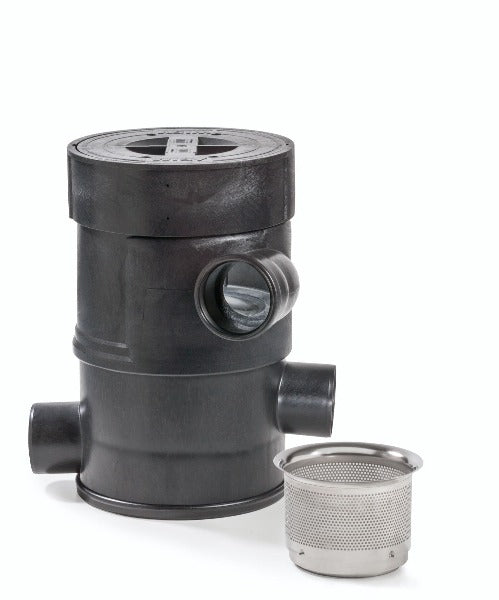
Rainwater pre-filters are next on our list of components of a rainwater harvesting system. Filtration is the first line of defense in safeguarding the water quality in a rooftop rainwater harvesting system. Filters are strategically placed within the system to remove debris and contaminants, ensuring the water stored is clean and safe for its intended use. Filtration is crucial because it removes large particulate matter, which can feed and carry harmful bacteria.
You can choose from in-line, vortex, and horizontal filters with micron sizes as low as 280. At those sizes, the only particles to escape are smaller than a grain of sand. You can opt for a filter on each downspout or collect the rainwater from all the downspouts to one pipe with a single filter.
Pre-filters play a crucial role in the WYSY Four-Step System, which we recommend to all our customers to cut down on maintenance and provide the best quality water. Pre-filters not only remove particles but also aerate the water, which helps reduce the amount of harmful bacteria.
Next in the system is the smoothing inlet, which lies in the tank and pushes incoming water up so as not to disturb the healthy biome at the bottom of the tank.
Another essential part of the system is the floating filter, which pulls water from below the surface of the tank into the pump, helping to avoid contaminants that may rest on the water's surface.
Last in the system is the tank overflow. This device draws off small particulates that may be floating on the surface of the water and provides an escape route for excess rainwater.
The smoothing inlet, floating filter, and tank overflow are all integral to our next major component of rainwater harvesting, the storage tank.

Any list of rainwater harvesting system components would be incomplete withoutrainwater storage tanks. The choice of storage tank — whether it's placed above ground or below, and the material it's made from — can significantly influence the system's efficiency, cost, and longevity. Among the most common materials for these tanks are polyethylene, wood, and metal, each with distinct advantages and challenges. Sizing these tanks correctly is also crucial to balance the demand with the supply of harvested rainwater.
Pros: Polyethylene tanks are widely favored for their durability, lightweight nature, and corrosion resistance. They are relatively inexpensive and are available in a variety of sizes, making them a versatile option for both residential and commercial, and above- or below-ground, applications. Their non-corrosive nature means they are excellent for storing rainwater without altering its quality.
Cons: Despite their durability, polyethylene tanks can degrade over time when exposed to UV light, necessitating their placement in shaded areas or requiring protective coatings. They also have a maximum size limit, which may require the installation of multiple tanks for larger systems.
Pros:A major advantage of fiberglass tanks is the material's rigidity. This stiffness allows the tanks' walls to be relatively thin compared to other options. Fiberglass tanks are also easy to repair.
Cons:Its rigidity also presents one fiberglass's main disadvantages: The rigid material is brittle and prone to breakage. Fiberglass tanks also allow more sunlight to enter, requiring an extra coating to prevent the resulting algal growth.
Pros: Metal tanks, especially those made from stainless steel, are extremely durable and can handle a wide range of temperatures and conditions. They are resistant to cracking and can be designed to hold large volumes of water, making them suitable for industrial or large-scale residential applications.
Cons: The primary disadvantage of metal tanks is their cost, as they are typically more expensive than polyethylene or fiberglass options. Additionally, tanks made from certain metals can corrode if not properly treated or if used to store certain types of water, requiring regular maintenance and potentially increasing operational costs.
Choosing the right size for a storage tank is a balance between the available catchment area, the average rainfall, and the intended use of the harvested water. It's essential to calculate the potential maximum collection volume while considering the practical space and budget constraints. Oversizing can lead to unnecessary costs, while undersizing may result in running out of water during dry spells. RMS offers assistance in sizing your rainwater storage tank. Submit a tank sizing request form to get the help you need.
If you want to use your collected rainwater indoors,whole house filtration systems are crucial rainwater harvesting system components. Rainwater, as it travels over the roof and through the collection system, can pick up various contaminants, including dust, organic matter, and even pollutants from the atmosphere. While some uses, like garden irrigation or certain industrial applications, might not require treated water, uses involving human contact or consumption demand a higher standard of water quality. Filtration systems are integral to ensuring that harvested rainwater meets these standards, protecting health and ensuring safety.
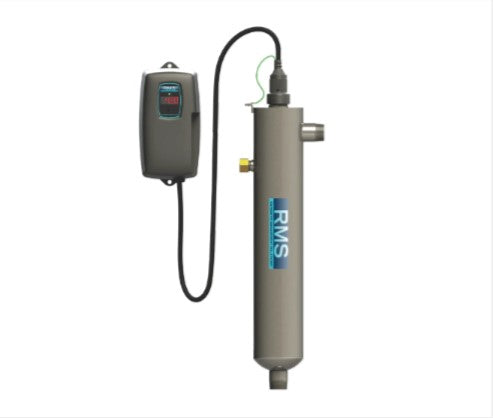
Sediment filtration systems are crucial as the initial step in a thorough rainwater filtration setup. Designed to eliminate physical contaminants such as dust, soil, and debris, these units serve as the preliminary barrier, paving the way for more sophisticated filtration methods.
Essential for protecting downstream equipment, sediment filters capture larger particles that could potentially harm or obstruct sensitive devices and piping. This protective measure is especially vital for systems incorporating ultraviolet (UV) disinfection. Pre-filtering sediment ensures the UV light operates at peak efficiency, providing an optimal setting for effective disinfection.
Following sediment filtration, carbon filters play a pivotal role, operating in conjunction with sediment filters to refine water quality further. While sediment filters address larger particulates, carbon filters are tasked with improving water's aesthetic qualities — its taste, clarity, and smell. These filters eliminate organic substances, chlorine, and various chemical pollutants through activated carbon.
Positioning the carbon filter right after the sediment filter and just before the UV disinfection stage optimizes the removal of both physical and chemical contaminants. This strategic placement ensures the water is in its purest form before UV treatment, enhancing the overall effectiveness of the filtration process.
UV purification systems offer a chemical-free approach to disinfecting water. The UV light damages the DNA of harmful organisms, rendering them harmless. UV systems are highly effective, provided the water is relatively clear to allow proper penetration of UV light.
This method is particularly appealing to those looking to avoid the taste and potential health risks associated with chemical treatments. Positioned after sediment and carbon filtration, the UV system ensures the water is significantly purified when it reaches this final disinfection stage, making the UV treatment even more effective.
Last but not least on our list of components of rainwater harvesting systems is the method of distribution. Whether for irrigation, washing, or indoor uses, the efficiency of the distribution system directly impacts the overall effectiveness of the rainwater harvesting setup. This system comprises pumps and piping, which can be configured in either gravity-fed or mechanical systems, each with its unique advantages and considerations.
Pumps are the heart of mechanical distribution systems, propelling water from storage tanks through the piping to its intended destination. The choice of pump — submersible or external, manual or automatic — depends on the system's requirements, including the distance the water needs to travel and the elevation difference between the tank and the delivery point. Piping, on the other hand, serves as the network of veins, ensuring the efficient and leak-free transport of water throughout the property.
Mechanical systems, powered by pumps, offer versatility and control, capable of delivering water to points higher than the storage tank and over longer distances. You can customize these systems to meet specific pressure and flow rate requirements, making them appropriate for a wide range of applications, such as commercial or residential settings. While mechanical systems provide greater flexibility in system design and water usage, they also require electrical energy to operate the pumps, leading to higher operational costs and a need for regular maintenance.
Gravity-fed systems harness the natural force of gravity to distribute water, eliminating the need for pumps. These systems are designed with storage tanks placed at a higher elevation than the usage points, allowing water to flow downwards through the pipes. The simplicity of gravity-fed systems translates to lower energy costs and reduced maintenance, making them an attractive option for those looking to minimize their environmental footprint and operational expenses. However, the feasibility of such systems depends on the topography of the site and the architectural design of the building.
The decision between a gravity-fed and mechanical distribution system depends on several factors, including the site's physical layout, water usage needs, and sustainability goals. A gravity-fed system may offer a cost-effective and low-maintenance solution for sites with favorable elevation. In contrast, mechanical systems provide the necessary power and flexibility for more demanding applications.
Setting up a rooftop rainwater harvesting system is an exciting venture toward sustainability and self-sufficiency. But you must make informed decisions about the various rainwater harvesting system components you'll purchase. To ensure that your setup aligns with your constraints and goals, you must answer critical questions before selecting the components of your rainwater harvesting system. Addressing these questions will help tailor your system to your specific situation, ensuring efficiency, compliance, and satisfaction in the long run:
Browse our collection of rainwater filters. Here at Rainwater Management Systems, we have a variety of different rainwater storage tank filters inlets to handle different storage tank applications. Our storage tank filtration systems focus on removing particulate matter and the oxygenation of rainwater, and thus keep your rainwater collection free of debris, clean, and safe for use.
As a major contributor in the $890.2 million rainwater harvesting market, Rainwater Management Solutions is a trusted source of information about the components of a rainwater harvesting system. Read the following questions for the answers you need.
Essential rainwater harvesting system components include a catchment area, a conveyance system, pre-storage filters, a storage system, a filtration system, and a distribution system.
Drinking is among the many applications for harvested rainwater. But it requires careful planning and the right components. The system must include proper filtration and disinfection processes, such as UV purification, to ensure the water meets drinking quality standards.Be sure to consult your local health department before designing a potable rainwater harvesting system for your home or business.
The size of your storage tank should be based on the roof area available for collecting rainwater, the average rainfall in your area, and your water usage needs. One general rule of thumb is that 1,000 square feet of roof area generates about 620 gallons of rainwater per 1 inch of rainfall. Calculate your potential collection and match it with your usage patterns to determine the correct tank size. Our knowledgeable staff will be happy to help with these calculations.
Ready to positively impact the environment while reducing your water bills? Rainwater Management Solutions is here to guide you through every step of your journey. With our extensive range of high-quality components of rainwater harvesting systems, you're not just purchasing products; you're securing a reliable water supply for your home or business. Shop now for the system that meets your needs.
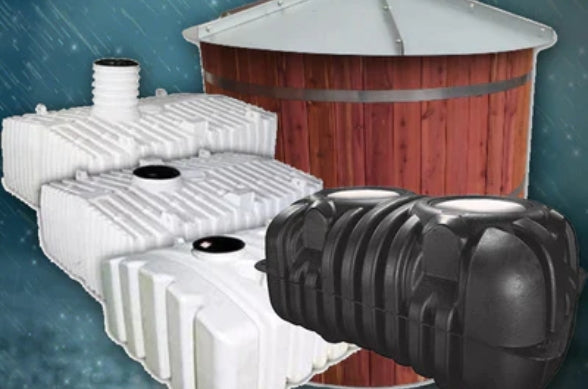
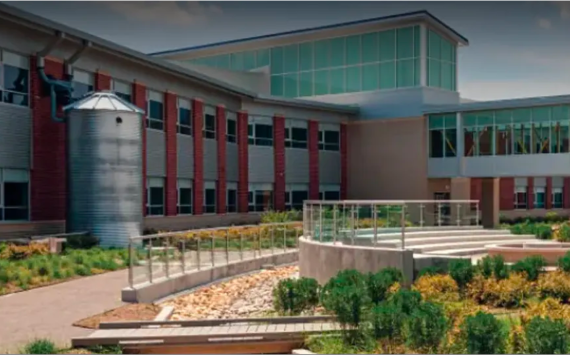 Rainwater Harvesting 101
Learn all the ins and outs of rainwater harvesting. Read More
Rainwater Harvesting 101
Learn all the ins and outs of rainwater harvesting. Read More 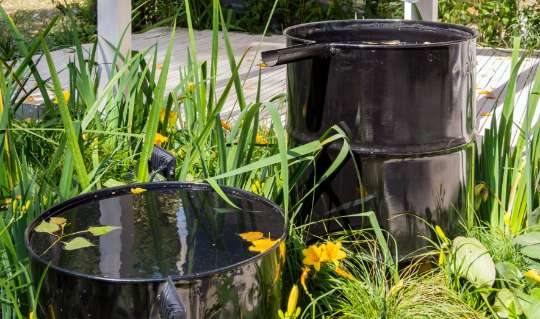 The Benefits of Rainwater Harvesting
Discover the many advantages of installing a rainwater harvesting system. Read More
The Benefits of Rainwater Harvesting
Discover the many advantages of installing a rainwater harvesting system. Read More  How To Set Up A Tiny House Rainwater Collection System
Get a complete understanding of everything required to properly filter water for indoor use. Read More
How To Set Up A Tiny House Rainwater Collection System
Get a complete understanding of everything required to properly filter water for indoor use. Read More